Blog
Posts in: British Military
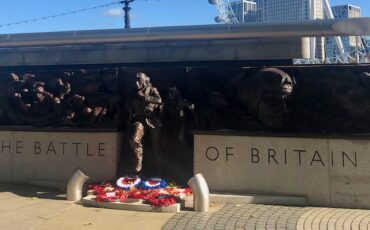
Five Top Battle of Britain Sites to Visit in London
This summer marks 80 years since the Battle of Britain was fought in the skies over southern England. This was a fight for Britain’s survival against a Nazi Germany that had conquered much of western Europe in just a few short months. With the fall of France in June, Britain expected a German invasion, and one was indeed being planned under the codename Operation Sealion. However, for the invasion to be successful the Germans first needed to control the skies over Britain – they needed to destroy the Royal Air Force.
Read more
Sir Winston Churchill: A Soldier, Statesman, and Symbol of Strength
Winston Churchill is undoubtedly Britain’s most revered politician. He was born in 1874 at Blenheim Palace as a member of a major aristocratic family and is buried in a modest grave nearby. His statue stands opposite the clock, which everybody refers to as Big Ben (actually the name of the bell behind the clock). Chartwell, his house in Kent, is is an important money earner for the National Trust, who welcome around a quarter of a million visitors there every year.
Read more
10 Facts About The Victoria Cross And The George Cross
The Victoria Cross and the George Cross are the highest medals awarded in the United Kingdom to military personnel and civilians for acts of bravery in wartime or peacetime. Many of them are displayed at the Imperial War Museum in Lambeth, South London. Below are 10 facts about the Victoria Cross and the George Cross.
Read more
The Story Behind Royal Gun Salutes
Regular and Reserve British Army soldiers marked the seventieth anniversary of the Queen’s Accession to the Throne on Monday, 7th February, in London with a celebratory gun salute. The Queen ascended to the throne on 6th February 1952 but, when the day itself falls on a Sunday, as happened in 2022, the salute is not fired until the following day.
Read more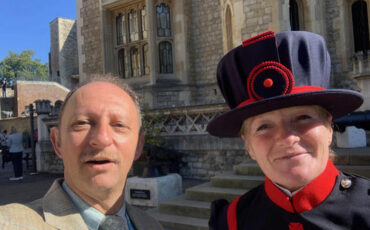
Lady Beefeaters At The Tower Of London
The first female Yeoman Warder appointed at the Tower of London was Moira Cameron who comes from Scotland and took up the role in 2007. Like all Yeoman Warders, who are often called Beefeaters, she was a former non-commissioned officer who had served in one of Britain’s military forces – the army, navy, air force or royal marines – for a minimum of twenty-two years with an ‘unblemished record’ and had been awarded a good conduct medal. As an often repeated Beefeater joke has it, ‘that just means we never got caught.’
Read more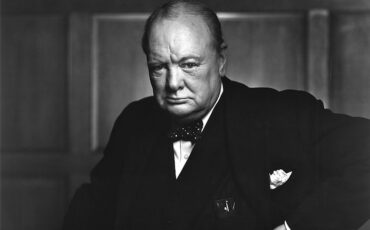
Winston Churchill Style - 7 Fashion Secrets Of The Churchill War Rooms
Deep under Whitehall – the home of the United Kingdom’s major government departments – is a secret lair to rival anything created by a James Bond baddie intent on world domination. The Churchill War Rooms were constructed secretly as the bomb-proof centre of wartime government. Churchill was initially reluctant to go underground but he fought fascism here from 1939 to victory in 1945. With him was his wartime coalition ‘cabinet of all the talents’, his senior chiefs and advisors - and a small army of military and civilian staff, all engaged in top-secret work.
Read more
His Royal Highness Prince Philip, Duke of Edinburgh (1921 - 2021)
The death of Prince Philip at the age of ninety-nine was announced by Buckingham Palace at midday on 9th April 2021. Prince Philip and the Queen had been married for seventy-three years since their wedding at Westminster Abbey in 1947. He was the longest-serving consort to a monarch in the history of the United Kingdom.
Read more
London Battlefield Sites Within The M25
2021 year marks the 550th anniversary of one of the most significant battles in British history. On the 14th of April 1471, the Yorkist army led by Edward IV defeated a Lancastrian army just north of the town of Barnet effectively ending the first part of that turbulent period of history colloquially known as the Wars of the Roses.
Read more
American Entertainers In London During World War II & The Venues They Played
During the Second World War London was home to, or visited by, tens of thousands of American Servicemen and women. When they wanted entertainment in the evenings they headed to the West End and the American Red Cross (ARC) Club was the first stop for many of them. There were several ARC clubs in London and many around the world offering meals and recreational activities, and the larger ones could provide overnight accommodations and facilities such as barbers and laundries.
Read more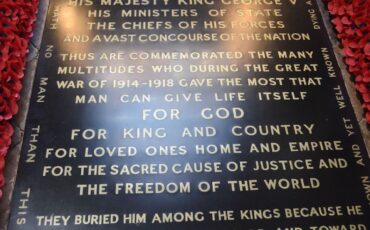
The Final Journey Of The Unknown Warrior At Westminster Abbey
The most emotionally powerful story I tell as a Blue Badge Tourist Guide is that of the Unknown Warrior – a single British soldier who through his anonymity came to represent hundreds of thousands of British soldiers killed during the First World War.
Read more
The Story of the Cenotaph in London – Marking 100 Years
At 11 a.m. on 11th November 1920, Britain marked the exact moment two years previously when the Armistice ended the fighting of the First World War. Standing on Whitehall, King George V stepped forward to unveil a new permanent Cenotaph and join the nation in two minutes of silent reflection. This moment started the tradition of the monarch leading the nation in remembrance from the Cenotaph, which is still with us 100 years later.
Read more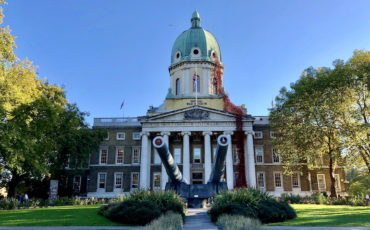
Remembering The Blitz On London
On the afternoon of 7th September 1940, 350 German bomber planes attacked London, devastating the docks area and killing over 400 people. The day became known as Black Saturday and marked the beginning of a bombing campaign – the Blitz – that terrorised the city for eight months. Around 20,000 Londoners were killed. Eighty years on from Black Saturday, Blue Badge Tourist Guide Ruth Polling explores how remnants of that period can still be seen in London today.
Read more
Six Objects From World War II With A powerful Story To Tell
On 8th May 2020, we will be commemorating the 75th anniversary of Victory in Europe Day (VE Day), when World War II came to a conclusion. The war had been long, exhausting and involved a rollercoaster of highs and lows, militarily, politically, economically, socially and emotionally. I have chosen six objects that can be seen in London to tell the tale of some of these events. Each is on display at either the Imperial War Museum (in Lambeth, south London and free to visit) or the Churchill War Rooms (in central London, £23 for a standard adult ticket).
Read more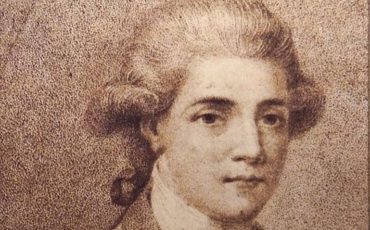
Memorial At Westminster Abbey For Major John Andre - An Officer, A Gentleman And A Spy
Westminster Abbey has over 3,000 burials and memorials within its precincts, commemorating royalty, poets, scientists, politicians, musicians and more. Booking a Westminster Abbey Tour with a Blue Badge Tourist Guide is a great way to learn about some fascinating features in the church that may go unnoticed by most visitors.
Read more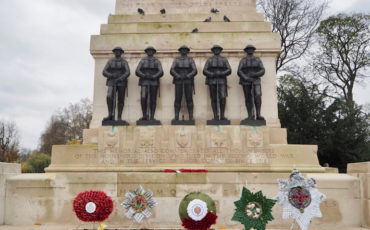
History of Armistice Day – 100+ Years Since The Great War Ended
Blue Badge Tourist Guides taking groups around London and throughout Britain at this time of year will often be asked by visitors about the red poppies which British people are wearing. These commemorate those who were killed in the First and Second World Wars and in other conflicts, the United Kingdom has been involved during the last century. The poppy appeal raises around £50 million every, the money going to service charities.
Read more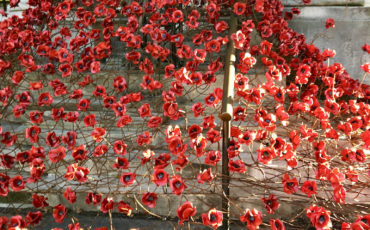
10 Things You Might Not Know About The Red Poppy Flower
Each year, millions of red poppy flowers are distributed across the United Kingdom leading up to Remembrance Sunday. Held on the second Sunday each November, Remembrance Sunday commemorates the contribution of British and Commonwealth military and civilian servicemen and women in the two World Wars and later conflicts. With that in mind, below are ten things you might not know about the red poppy flower.
Read more
The National Army Museum In London
The newly opened National Army Museum in Chelsea area of London tells the story of the British army over the past 400 years. It is felt that many people know little about what the army does, let alone the soldier’s real experience now or in the past. The museum seeks to bridge the gap between the army and British society.
Read more
Top 10 Things to See at the Imperial War Museum
The Imperial War Museum presents London's greatest collection of military arms and hardware. Famed for its tanks, aircraft, and weapons, the museum also reveals and reflects on the rich personal tales and first-hand accounts of British and Commonwealth involvement in 20th and 21st Century conflicts all around the world. Visit the Imperial War Museum with a Blue Badge Tourist Guide to discover their stories and touch the hand of military history.
Read more
Top 10 Facts About The Changing Of The Guard Ceremony
Elite soldiers from 5 infantry and 2 cavalry regiments have been guarding the Monarch since 1660. These 7 regiments are called the Household Division. The Changing of the Guard ceremony at Buckingham Palace and St James Palace is a time honoured symbol of the British monarchy and a great example of British pomp and ceremony.
Read more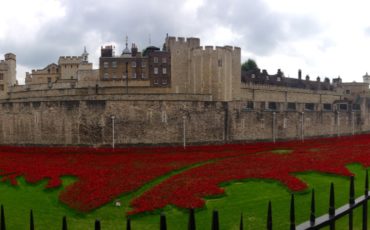
Tracing The Tower Of London Poppies
Who can forget the wonderful site of the 888,246 handmade ceramic poppies by the artist Paul Cummins filling the moat of the Tower of London and cascading down the walls and over the drawbridge area three years ago? Created to represent every British fatality during WWI and to remember the 100 years since the outbreak of war ‘Blood Swept Lands and Seas of Red’, grew daily, aided in a small way by many Blue Badge Tourist Guides who helped to plant some of them.
Read more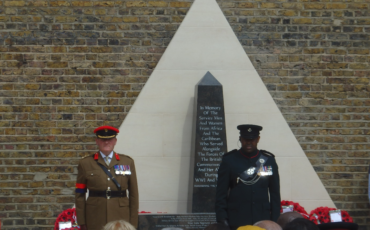
African & Caribbean War Memorial Unveiled at Black Cultural Archives in London
Next to the Black Cultural Archives, the ceremonial unveiling of the African & Caribbean War Memorial took place in Windrush Square Brixton on 22 June – Windrush Day. The date and location of the memorial fixed one key historical event in peoples’ minds, the arrival of SS Empire Windrush in 1948 carrying 498 men and a few women from the Caribbean.
Read more
10 Reasons To Visit Winston Churchill’s Cabinet War Rooms
The Cabinet War Rooms are the actual wartime headquarters of Winston Churchill, combined with a large museum devoted to his life. Housed in the basement of the magnificent Treasury building, the War Rooms are the actual conference and communication rooms used by Churchill and his Chiefs of Staff during World War II. In 2005, an extensive museum was added documenting the long and eventful life of Sir Winston Churchill.
Read more
'Big Push' from School Trips Site for World War One Walks
World War One Walks have now found a natural home on the homepage of School Travel Organiser. “Plenty of teachers found Blue Badge tours a natural fit for their geography and sports history courses in the run-up to 2012. We’re hoping we can repeat something like that with the Great War,” says Stan Medland, a World War One Walks committee member.
Read more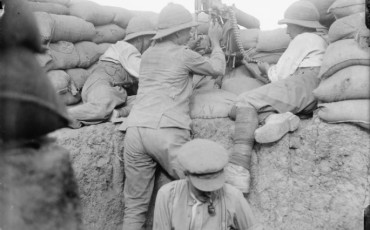
Marking the Centenary of the Gallipoli Campaign
There’s a Turkish saying that one disaster is better than 1,000 pieces of advice. Whatever myths created about it in the last 100 years, Gallipoli was a disaster. The Turks won. Gallipoli was the British Empire and France trying to knock Germany’s ally Turkey out of World War One, thereby reducing the pressure on the Allies’ eastern front. As the historians say, “Gallipoli was launched almost casually, into a void, and was doomed to fail.”
Read more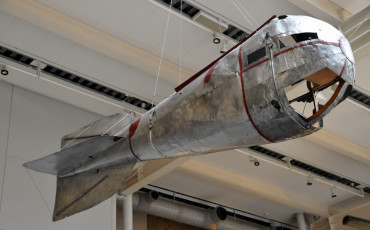
London's Year Of The Zeppelin
In commemorating of the centenary of the First World War, much of our attention has been focused on the soldiers that fought and died in foreign lands in what was described as a war to end all wars. Simon Rodway’s walking tour from Holborn to Liverpool Street on 11 November 2014 made us look at the events closer to home – the deadly menace that was the Zeppelin air ships that flew almost silently over the London sky in 1915 wreaking havoc on the unsuspecting Londoners below by launching the first of many incendiary bombs here in London and other parts of England. It was to be known as the Year of the Zeppelin. The catastrophe that befell London lasted 20 minutes but our walk would take a little longer.
Read more
World War One Walks plans Commemorative ‘big push’
The Blue Badge Tourist Guides' World War One Walks committee is organising more than a dozen events around the middle of November, which will recall the 1914-18 Home Front in London, Windsor, Manchester and Birmingham.
Read more
First World War Walks in Britain
A group of London Blue Badge Tourist Guides have created a website World War One Walks and a marketing programme to attract people who are interested in learning more about the Great War through walking tours. They have committed to building this initiative across the whole country and for the full five years of centenary commemorations.
Read more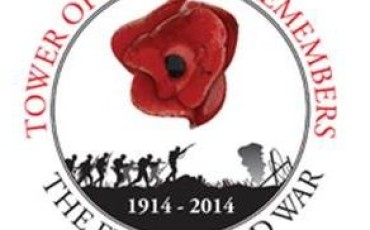
Blue Badge Tourist Guides help install ‘Seas of Red’ at the Tower of London
London Blue Badge Tourist Guides are involved in a truly unique art installation to commemorate the start of the First World War. More than 800,000 ceramic poppies – each representing a British and Colonial military death during the First World War - are being planted in the Tower of London’s dry moat. When completed on Armistice Day on 11 November 2014, the art installation, titled ‘Blood Swept Lands and Seas of Red’, will include 888,246 poppies.
Read more


